Statistical Evaluation of CPT and CPTu Based Methods for Prediction of Axial Bearing Capacity of Piles
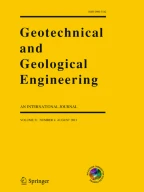
Piles are structural members made of steel, concrete, or wood installed into the ground to transfer superstructure loads to the soil. Nowadays, many structures are built on poor lands, and therefore piles have crucial roles in such structures. Performing in-situ tests such as cone penetration (CPT) and piezocone penetration tests (CPTu) have always been of great importance in designing piles. These tests have a brilliant consistency with reality, and as a result, the outcome data can be used in order to achieve reliable pile designing models and reduce uncertainty in this regard. In this paper, the capability of various CPT and CPTu based methods developed from 1961 to 2016 has been investigated using four statistical methods. Such CPT and CPTu based methods are adopted for direct prediction of axial bearing capacity of piles using CPT and CPTu field data. For this purpose, 61 sets of field data prepared from CPT and CPTu have been collected. The data sets were utilized in order to calculate the axial bearing capacity of piles (QE) through 25 different methods. In addition, the measured axial pile capacities (QM) have been collected, recorded and prepared from field static load tests, respectively. Then, four different statistical approaches have been applied to assess the accuracy of these methods. Finally, the most reliable and accurate methods are presented.
This is a preview of subscription content, log in via an institution to check access.
Access this article
Subscribe and save
Springer+ Basic
€32.70 /Month
- Get 10 units per month
- Download Article/Chapter or eBook
- 1 Unit = 1 Article or 1 Chapter
- Cancel anytime
Buy Now
Price includes VAT (France)
Instant access to the full article PDF.
Rent this article via DeepDyve
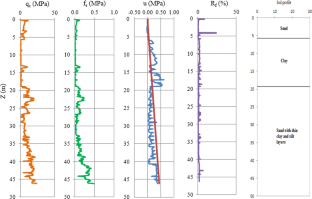
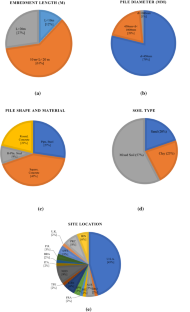
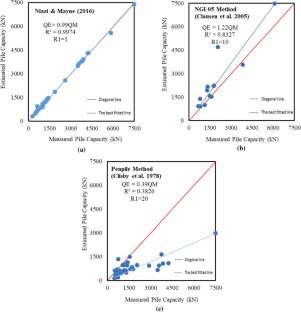
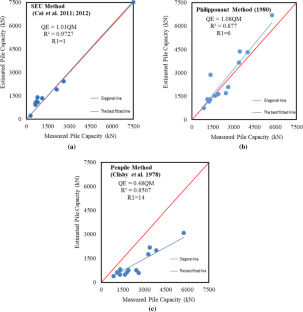
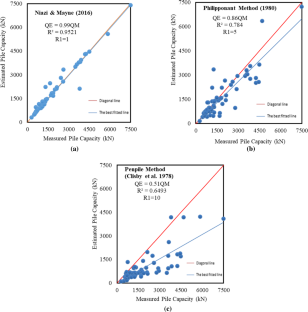
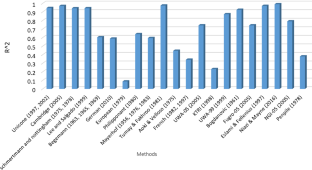
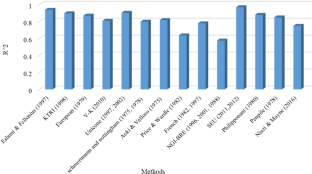
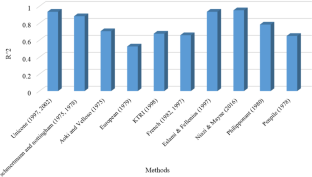
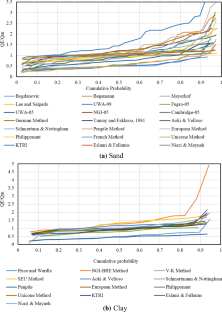
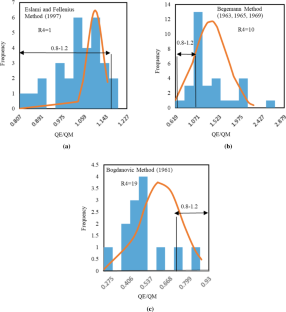
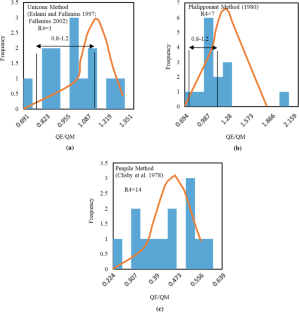
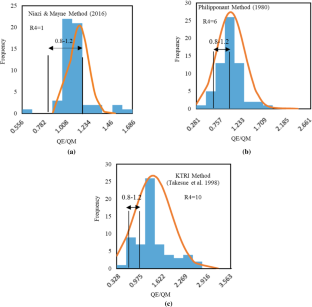
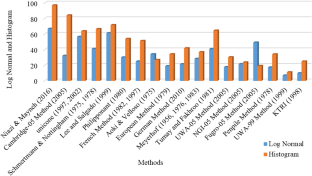
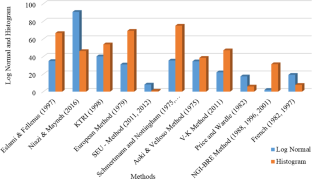
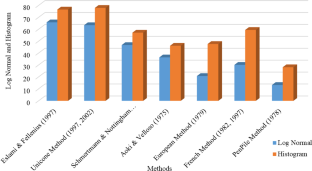
Similar content being viewed by others
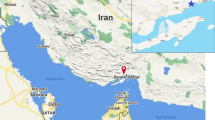
Statistical Assessment of Bearing Capacity of Cast-In-Situ Bored Piles Using Direct CPT and SPT Methods: A Case Study
Article 11 December 2022
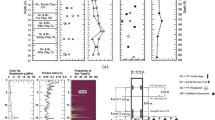
Evaluating the Direct CPT-Based Design Methods for Estimating the End Bearing and Side Resistance of Instrumented Test Piles
Article 10 July 2024

An Improved CPTu-based Method to Estimate Jacked Pile Bearing Capacity and Its Reliability Assessment
Article 09 August 2019
References
- Abu-Farsakh MY, Titi HH (2004) Assessment of direct cone penetration test methods for predicting the ultimate capacity of friction driven piles. J Geotechn Geoenviron Eng 130:935–944 ArticleGoogle Scholar
- Albiero J, Sacilotto A, Mantilla J, Teixeira C, Carvalho D (1995) Sucessive load tests on bored piles. In: Proceedings, 1995.
- Almeida MS, Danziger FA, Lunne T (1996) Use of the piezocone test to predict the axial capacity of driven and jacked piles in clay. Can Geotech J 33:23–41 ArticleGoogle Scholar
- Alsamman OM (1995) The use of CPT for calculating axial capacity of drilled shafts. University of Illinois at Urbana-Champaign
- Altaee A, Evgin E, Fellenius BH (1992a) Axial load transfer for piles in sand. II Numerical analysis. Can Geotech J 29:21–30 ArticleGoogle Scholar
- Altaee A, Fellenius BH, Evgin E (1992b) Axial load transfer for piles in sand. I Tests on an instrumented precast pile. Can Geotech J 29:11–20 ArticleGoogle Scholar
- Amirmojahedi M, Abu-Farsakh M (2019) Evaluation of direct pile-CPT methods for estimating the ultimate capacity of driven piles. In: Geo-Congress 2019: Foundations, 2019. American Society of Civil Engineers Reston, VA, pp 167–177
- Aoki N, Velloso DdA (1975) An approximate method to estimate the bearing capacity of piles. In: Proceedings of 5th Pan-American Conference of Soil Mechanics and Foundation Engineering. International Society of Soil Mechanics and Geotechnical Engineering Buenos …, pp 367–376
- Attar IH, Fakharian K (2013) Influence of soil setup on shaft resistance variations of driven piles: case study. Int J Civ Eng Trans B: Geotech Eng 11:4–5 Google Scholar
- Avasarala S, Davidson J, McVay A (1994) An evaluation of predicted capacity of single piles from SPILE and UNIPILE programs. In: Proceedings of the FHWA International Conference on Design and Construction of Deep Foundations, Orlando, Fla, 1994. pp 712–723
- Axelsson G (1998) Long-term increase in shaft capacity of driven piles in sand. International Conference on Case Histories in Geotechnical Engineering, University of Missouri—Rolla-57
- Begemann HP (1963) The use of the static soil penetrometer in Holland. NZ Eng 18:41 Google Scholar
- Begemann H (1965) The maximum pulling force on a single tension pile calculated on the basis of results of the adhesion jacket cone. In: Proceedings of the 6th International Conference on Soil Mechanics and Foundation Engineering, Montreal, pp 229–233
- Begemann H (1969) The dutch static penetration test with the adhesion jacket cone. Chapter III Tension Piles.. LGM Mededelingen, Delft
- Bogdanovic L (1961) The use of penetration tests for determining the bearing capacity of piles. In: Proceedings of the 5th International Conference on Soil Mechanics and Foundation Engineering, Paris
- Briaud J (1988) Evaluation of cone penetration test methods using 98 pile load tests. In: Proceedings of the 1st International Symposium on Penetration Testing, pp 687–697
- Briaud J-L, Moore BH, Mitchell GB (1989) Analysis of pile load tests at Lock and Dam 26. In: Foundation engineering: Current Principles and Practices. ASCE, pp 925–942
- Bustamante M, Frank R (1997) Design of axially loaded piles in France: National Report. International Seminar Design of Axially loaded piles: European Practice, Brussels, Belgium
- Bustamante M, Gianeselli L (1982) Pile bearing capacity prediction by means of static penetrometer CPT. In: Proceedings of the 2-nd European Symposium on Penetration Testing, pp 493–500
- Cai G, Liu S, Puppala AJ (2011) Evaluation of pile bearing capacity from piezocone penetration test data in soft Jiangsu Quaternary clay deposits. Marter Georesour Geotechnol 29:177–201 ArticleGoogle Scholar
- Cai G, Liu S, Puppala AJ (2012) Reliability assessment of CPTU-based pile capacity predictions in soft clay deposits. Eng Geol 141:84–91 ArticleGoogle Scholar
- Campanella R, Robertson P, Davies M, Sy A (1989) Use of in situ tests in pile design. In: Congrès International de Mècanique Des Sols Et Des Travaux de Fondations, vol 12, pp 199–203
- Clausen C, Aas P, Karlsrud K (2005) Bearing capacity of driven piles in sand, the NGI approach. In: Proceedings of International Symposium. on Frontiers in Offshore Geotechnics, Perth, pp 574–580
- Clisby M, Scholtes R, Corey M, Cole H, Teng P, Webb J (1978) An evaluation of pile bearing capacities, vol I. Final Report, Mississippi State Highway Department
- De Ruiter J, Beringen F (1979) Pile foundations for large North Sea structures. Marter Georesour Geotechnol 3:267–314 Google Scholar
- Douglas B (1981) Soil classificaion using electric cone penetrometer. In: Symposium on Cone Penetration Testing and Experience, Geotech. Engrg. Div. ASCE, pp 209–227
- Eslami A, Fellenius BH (1997) Pile capacity by direct CPT and CPTu methods applied to 102 case histories. Can Geotech J 34:886–904
- Eslami A, Aflaki E, Hosseini B (2011) Evaluating CPT and CPTu based pile bearing capacity estimation methods using Urmiyeh Lake Causeway piling records. Scientia Iranica 18:1009–1019 ArticleGoogle Scholar
- Eslami A, Tajvidi I, Karimpour-Fard M (2014) Efficiency of methods for determining pile axial capacity-applied to 70 cases histories in Persian Gulf northern shore. Int J Civ Eng 12:45–54
- Fellenius B (2002) Excerpt from Chapter 6 of the Red Book: Direct methods for estimating pile capacity vol 22. Background to UniCone.https://fellenius.net. Accessed May.
- Finno R (1989) Subsurface conditions and pile installation data. American Society of Civil Engineers. In: Proceedings of Symposium on Predicted and Observed Behavior of Piles, Evanston, pp 1–74
- Gambini F (1985) Experience in Italy with centricast concrete piles. In: Proceedings of International Symposium on Penetrability and Drivability of Piles, pp 97–100
- Haustorfer I, Plesiotis S Instrumented dynamic and static pile load testing at two bridge sites. In: Fifth Australia-New Zealand conference on geomechanics: prediction versus performance; preprints of Papers, 1988. Institution of Engineers, Australia, p 514
- Hegazy YA, Mayne PW (2002) Objective site characterization using clustering of piezocone data. J Geotech Geoenviron Eng 128:986–996 ArticleGoogle Scholar
- Horvitz G, Stettler D, Crowser J (1981) Comparison of predicted and observed pile capacity. In: Cone Penetration Testing and Experience. ASCE, pp 413–433
- Huichang W (1991) A method for predicting load–settlement relationship and bearing capacity of single piles by means of CPT. In: DFI, Beijing, 1991.
- Jefferies M, Davies M (1991) Soil classification by the cone penetration test: discussion. Can Geotech J 28:173–176 ArticleGoogle Scholar
- Kempfert H-G, Becker P (2010) Axial pile resistance of different pile types based on empirical values. In: Deep Foundations and Geotechnical In Situ Testing, pp 149–154
- Kolk H, Baaijens A, Senders M (2005) Design criteria for pipe piles in silica sands. In: Design criteria for pipe piles in silica sands. CRC Press/Balkema, pp 711–716
- Lee J, Salgado R (1999) Determination of pile base resistance in sands. J Geotech Geoenviron Eng 125:673–683 ArticleGoogle Scholar
- Lehane B, Schneider J, Xu X (2005) The UWA-05 method for prediction of axial capacity of driven piles in sand. In: Frontiers in Offshore Geotechnics: ISFOG, 2005. pp 683–689
- Long JH, Wysockey MH (1999) Accuracy of methods for predicting axial capacity of deep foundations. In: Analysis, Design, Construction, and Testing of Deep Foundations. ASCE, pp 180–195
- Lunne T, Powell JJ, Robertson PK (2002) Cone penetration testing in geotechnical practice. CRC Press
- Matsumoto T, Michi Y, Hirano T (1995) Performance of axially loaded steel pipe piles driven in soft rock. J Geotech Eng 121:305–315 ArticleGoogle Scholar
- Mayerhof G (1976) Bearing capacity and settlemtn of pile foundations J Geotech Geoenviron Eng 102
- Mayne P (1993) Axial load-displacement behavior of drilled shaft foundations in Piedmont Residuum. US Federal Highway Administration. Research Report FHWA-41–30–2175,
- Meyerhof G (1956) Penetration tests and bearing capacity of cohesionless soils. J Soil Mech Found Div 82:1–19 Google Scholar
- Meyerhof GG (1983) Scale effects of ultimate pile capacity. J Geotech Eng 109:797–806 ArticleGoogle Scholar
- Nevels JB, Snethen DR (1994) Comparison of settlement predictions for single piles in sand based on penetration test results. In: Vertical and Horizontal Deformations of Foundations and Embankments. ASCE, pp 1028–1038
- Niazi FS, Mayne PW (2013) Cone penetration test based direct methods for evaluating static axial capacity of single piles. Geotech Geol Eng 31:979–1009 ArticleGoogle Scholar
- Niazi FS, Mayne PW (2016) CPTu-based enhanced UniCone method for pile capacity. Eng Geol 212:21–34 ArticleGoogle Scholar
- Nicola AD, Randolph M (1999) Centrifuge modelling of pipe piles in sand under axial loads. Géotechnique 49:295–318 ArticleGoogle Scholar
- Nottingham LC (1975) Use of quasi-static friction cone penetrometer data: To predict load capacity of displacement piles. University of Florida
- Obeta I, Onyia M, Obiekwe D (2018) Comparative analysis of methods of pile-bearing capacity evaluation using CPT logs from tropical soils. J South Afr Instit Civ Eng 60:44–55 ArticleGoogle Scholar
- Olsen R (1995) CPT stress normalization and prediction of soil classification. In: Proceedings of the International Symposium on Cone Penetration Testing, CPT'95, pp 257–262
- O'Neil M (1988) Pile group prediction symposium-summary of prediction results.
- O'Neill M, Hawkins R, Mahar L (1981) Field study of pile group action. US Federal Highway Administration. FHWA Report RD-81/002,
- Philipponnat G (1980) Méthode pratique de calcul d'un pieu isolé, à l'aide du pénétromètre statique Revue Francaise de Geotechnique, pp 55–64
- Powell J, Quarterman R (1988) The interpretation of cone penetration tests in clays, with particular reference to rate effects vol 2.
- Powell J, Lunne T, Frank R (2001) Semi empirical design procedures for axial pile capacity in clays. In: 15th International Conference on Soils Mechanics and Geotechnical Engineering, 2001. pp 991–994
- Price G, Wardle I (1982) A comparison between cone penetration test results and the performance of small diameter instrumented piles in stiff clay. In: Proceedings, the 2nd European Symposium on Penetration Testing, pp 775–780
- Rauser JG (2008) In-situ and nondestructive test methods applied to the design and construction of pile foundation projects in coastal Louisiana. Master Thesis,
- Reese J, O’Neill M, Wang S (1988) Drilled shaft tests, interchange of west belt roll road and US290 highway
- Robertson P (1990) Soil classification using the cone penetration test. Can Geotech J 27:151–158 ArticleGoogle Scholar
- Robertson PK, Campanella R, Gillespie D, Greig J (1986) Use of piezometer cone data. In: Use of In Situ Tests in Geotechnical Engineering. ASCE, pp 1263–1280
- Schmertmann JH (1978) Guidelines for cone penetration test: performance and design. New York, Federal Highway Administration
- Schneider JA, Xu X, Lehane BM (2008) Database assessment of CPT-based design methods for axial capacity of driven piles in siliceous sands. J Geotechn Geoenviron Eng 134:1227–1244 ArticleGoogle Scholar
- Takesue K, Sasao H, Matsumoto T (1998) Correlation between ultimate pile skin friction and CPT data. Geotech Site Charact 2:1177–1182 Google Scholar
- Tumay MT, Fakhroo M (1981) Pile capacity in soft clays using electric QCPT data. In: Cone Penetration Testing and Experience. ASCE, pp 434–455
- Urkkada Technology Ltd (1996) Dynamic testing of piles and analysis. Puerto Rico, Final Report, Urkkada Technology Ltd. Project 9509DH17
- Viergever MA (1982) Relation between cone penetration and static loading of piles in locally strongly varying sand layers. In: Proceedings of the 2nd European Symposium on Penetration Testing, ESOPT-2, Amsterdam, pp 927–932
- Vukićević M, Marjanović M, Pujević V, Obradović N (2018) Evaluation of methods for predicting axial capacity of jacked-in and driven piles in cohesive soils. Građevinar 70:685–693 Google Scholar
- Weber L (1987) Efficiency improvement of steel H-bearing piles vol 7210.
- White DJ, Bolton MD (2005) Comparing CPT and pile base resistance in sand. In: Proceedings of the Institution of Civil Engineers-Geotechnical Engineering. vol 1. pp 3–14
- Wilkinson PB, Chambers JE, Meldrum PI, Ogilvy RD, Caunt S (2006a) Optimization of array configurations and panel combinations for the detection and imaging of abandoned mineshafts using 3D cross-hole electrical resistivity tomography. J Environ Eng Geophys 11:213–221 ArticleGoogle Scholar
- Wilkinson PB, Meldrum PI, Chambers JE, Kuras O, Ogilvy RD (2006b) Improved strategies for the automatic selection of optimized sets of electrical resistivity tomography measurement configurations. Geophys J Int 167:1119–1126 ArticleGoogle Scholar
- Yen T-L, Lin H, Chin C-T, Wang R (1989) Interpretation of instrumented driven steel pipe piles. In: Proceedings Foundation Engineering Congress: Current Principle and Practices, GSP No, 1989. pp 1293–1308
- Zhang Z, Tumay MT (1999) Statistical to fuzzy approach toward CPT soil classification. J Geotech Geoenviron Eng 125:179–186 ArticleGoogle Scholar
Author information
Authors and Affiliations
- Faculty of Civil Engineering, K N Toosi University of Technology, Tehran, Iran Parisa Heidari & Mahmoud Ghazavi
- Parisa Heidari



















